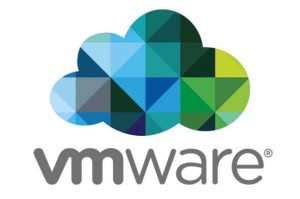Virtualizing Services

Hey folks, how you doing?
In today's post we will be talking about services and how they are supported in our data center. As ours will be a modern data center, all different servers will run in a virtual way.
For that reason, we are going to use VMware services to accomplish it. If we have a look to our new LAN solution (http://goo.gl/lnKtFU) we can see how it uses three different products from VMware, thats the reason why we have chosen VMware to solve the services part. Now we are going to study them an look if we need any product else (from VMware or any other vendor) to meet the services requirements, which, by the way, are the following:
- Consolidation of computing resources
- Reduce the amount of physical equipment
- Active services movement between servers
VMware
This company is one of the referents in the virtualizing sectors and claims to be the very first company to successfully virtualize the x86 architecture commercially. It has a wide variety of products, working the most of them for the wide variety of operating systems. Now lets take a look at those products that out data center solution presents:
VMware vCenter Server
VMware vCenter Server provides a centralized platform for managing VMware vSphere environments so automation and delivery of a virtual infrastructure can be deployed without any problem. Some basic characteristics are:
- Simple deployment of host profiles
- Centralized control and visibility from a single location
- Proactive optimization for maximum efficiency
- Management by using powerful tools to extend control.
VMware NSX Manager
The NSX Manager is a platform for the software defined data center (SDDC) by which you can control the network of your data center in an easy way. NSX lets you treat your physical network as a pool of transport capacity with network and security services attached to virtual machines with a very easy and comfortable way. It has the following characteristics:
- SDDC proven networking. You can create, save, restore and delete virtual networks on demand, without any modification in the physical network.
- Agility by providing services from weeks to seconds, this lets data center operators achieve faster deployment and greater agility, while providing the flexibility to run on top of any network hardware.
- Security and micro-segmentation. NSX brings security inside the data center with automated policies tied to the virtual machines, while its network virtualization capabilities let you create entire networks in software. This approach securely isolates networks from each other, delivering a better security model for the data center.
-
Platform for Advanced Networking and Security Services. NSX provides a platform for bringing other vendors networking and security solutions into the SDDC. By taking advantage of integration with the NSX platform, third-party products can not only deploy automatically as needed, but also adapt dynamically to changing conditions in the data center.
VMware NSX Controller
The NSX controller is a part of the control plane; it is logically separated from all data plane traffic. It is an advanced distributed state management system that controls virtual networks and overlay transport tunnels. The controller is the central control point for all logical switches within a network and maintains information of all virtual machines, hosts, logical switches, and VXLANs. The controller supports two new logical switch control plane modes, unicast and hybrid. These modes decouple NSX from the physical network.
We think that with the VMware tools explained above we get rid of all the services side. The main advantages of using virtualization with vmware services is that we are able to save in many aspects:
- We save in resources: until nowadays, a server meant a service, but from now on, we can collapse many services into a single physical machine by using virtualization.
- We save in space: more services running upon a single server means less servers, that implying more free space.
- We save in power consumption: less physicals servers means less electrical consumption, that benefiting the billing at the end of the month.
Definitely, what we are looking for is saving money, and virtualization allows us to do that.
Hope that the information was useful. For us, it has been for sure.
